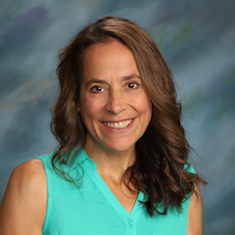The pursuit of home-school connections never ends for educators. As a principal, I make mention of literacy in virtually every monthly newsletter I send home. In fact, this is a message I sent last month:
There are many exciting things happening at Scottish Corners right now! First, we are continuing our focus on the celebration of reading. Thank you to all the families and teachers who attended Family Literacy Night. We enjoyed the discussions with you about how to spread the love of reading at home. As author Donalyn Miller, author of the inspiring The Book Whisperer, points out, “The students who are readers in our schools are also the top academic students in our schools. They achieve in all key areas of learning . . . therefore, turning our students into life-long readers should be one of our ultimate goals as teachers.” In short, the more students read, the better readers — and students — they become. We hope you’ll support this thinking at home by encouraging your child to read, read, and read some more!
Our first Family Literacy Night was a smashing success. The evening was largely led and planned by Amy Simmons, our Instructional Support Teacher. We organized the evening like a professional conference, with a keynote presentation at the beginning and then smaller break-out sessions individualized to the needs and interests of our families.
We began the evening by greeting all families at the door and giving them a “program” for the evening. Students were then directed to a classroom where they enjoyed a teacher reading a book aloud. The students were broken into primary and intermediate levels, so the books were age-appropriate for all students.
While they were enjoying an age-appropriate book read by a teacher, the parents all gathered in our common area. There, literacy expert and fourth-grade teacher Tony Keefer and I presented the parents with a 20-minute keynote presentation. The presentation was intended to bridge our literacy work at school with what parents do at home; our goal was to give parents specific strategies to support their child’s learning. We discussed how to find a “Just Right Book”; how to talk to their child about books; how important it is to read what they are reading; how to make reading fun and exciting; alternatives to books; and what to do if the child is stuck. We also stressed that reading should be an expectation for students at home, and parents can model this by reading themselves. We allowed a few minutes for parents to ask questions at the end.
Next, we made an announcement for the students to come back to the common area and meet back up with their parents. From there, the family chose three of six “sessions” to attend. Each session was 15 minutes long, and was led by the teams of grade-level teachers who had created an informative lesson for families.
- First grade: These teachers presented six strategies to help families read together.
- Second grade: This team addressed fluency in the primary grades. What is fluency? Why it it important? How can you build fluency with your child?
- Third grade: The focus was to help families navigate some online resources and books. Teachers explained how to find books in the library, and shared some iPad apps to help readers.
- Fourth grade: Building fluency was the theme of the fourth-grade team as well, but they addressed fluency for more developed readers. They shared online resources and suggestions for improving fluency.
- Fifth grade: To show off favorite books, these teachers led families in making a book “advertisement” to share with others.
- Bonus: Tony Keefer led parents with an online tour of Wonderopolis, and supported families in navigating this inspirational site.
As my families left the school that evening, I stood by the door to say goodbye and wish them a good evening. It seemed every single family stopped to speak to me, expressing deep appreciation for the night’s experiences. “I have always read to my child,” many told me, “but I had no idea what else I should be doing!” They admitted they were guilty of some things we’d warned against — providing spelling for tricky words without forcing the child to attempt first; picking books too easy for their child; and avoiding technology out of uncertainty of what were “good” apps and websites. Now after just a couple hours, most parents in attendance expressed they felt more confident and were eager to try some of our suggestions at home.
You can download a copy of our program for the evening by clicking here.







